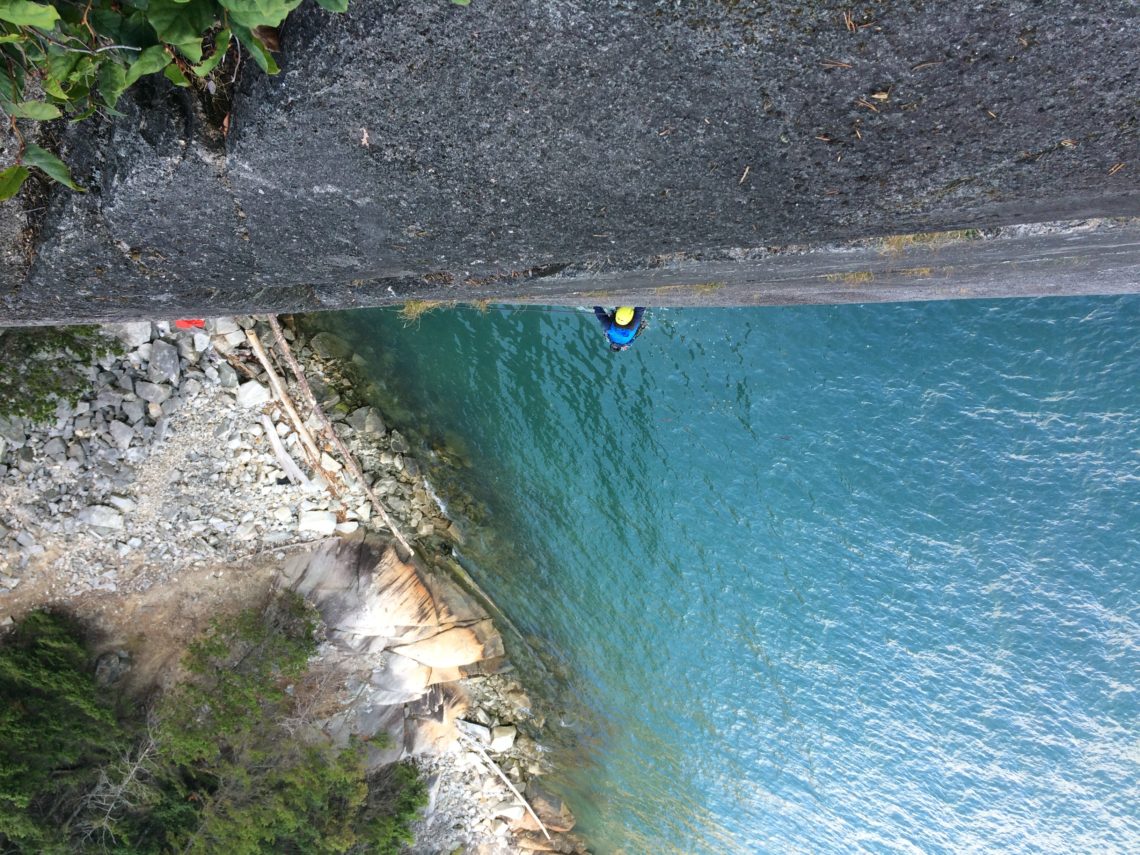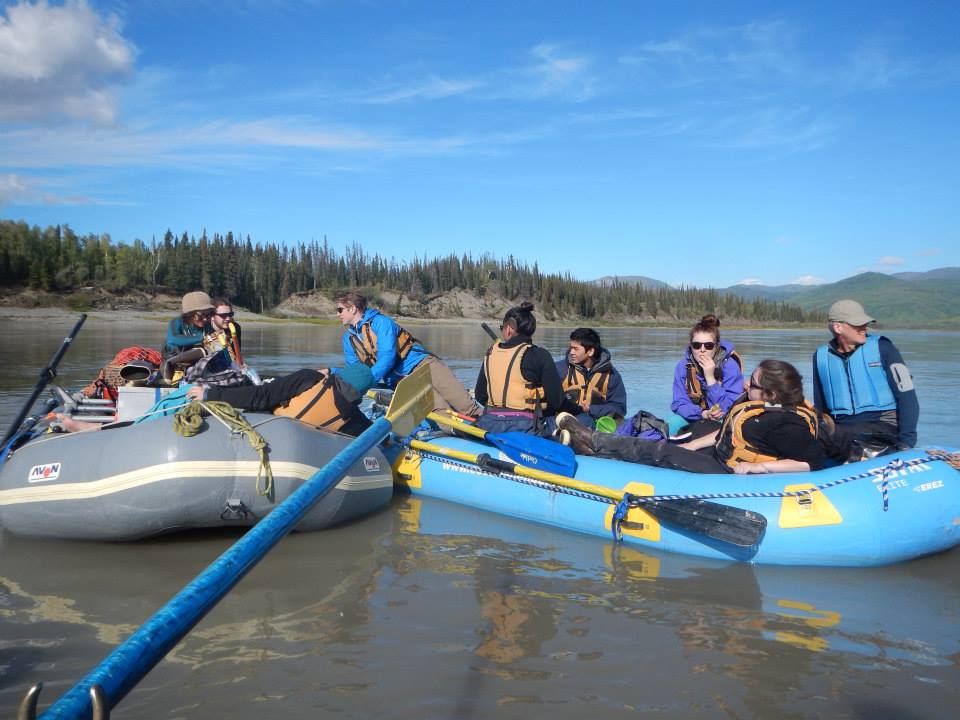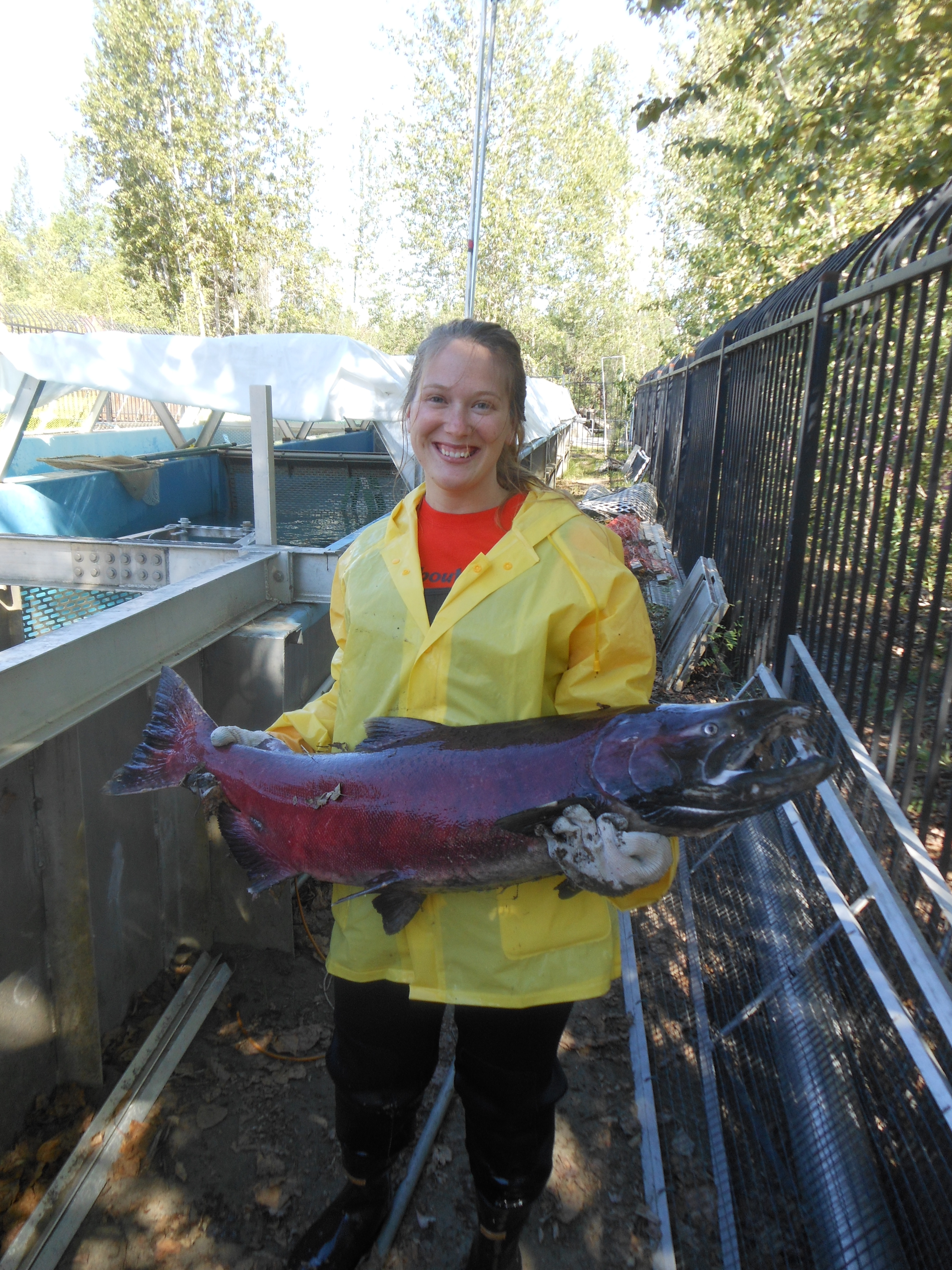By Peter Venardos
The ruffling of sleeping bags and zippers is just enough noise to wake him up. He doesn’t mind though, because he knows he still has an hour of rest left. Laying in the damp sleeping bag, he falls back to sleep running through what to expect on the climb they will embark on in a few hours.
“Waters hot!” His partner yells through the tent vestibule. Stiff and groggy, he crawls out to start the morning ritual with instant coffee, oatmeal, and the highlight of their dirtbag diet: graham crackers and peanut butter. Amidst the half awake conversations and sips of coffee, they gather the gear they will need for the rest of the day. A full standard rack of stoppers and cams (with doubles of mid-range sizes), about a dozen alpine runners, a 70-meter rope, anchor building materials, their climbing equipment, and just enough food and water will be all they need to get through the day. They run through the plan of the climb one more time, referring to guidebooks and online resources. Finally, they decide who will climb what pitches and determine as best they can, what to expect along the way, before piling into the van.
Although they did not know each other a few weeks ago, they now shared a bond only those who have tied in together on a climb would know. Between weeks of literally holding each others’ lives on the end of a rope, sleeping in saturated conditions, and sharing only the finest instant meals Canada could provide, they now trusted each other fully. They trusted each others’ climbing capability, knowledge, and personality enough to climb a historic six pitch climb in Canada’s premier rock climbing destination, Calculus Crack in Squamish BC. And yet, for as far as they had come as individuals and as climbing partners over the past several weeks, he still couldn’t tell you his partner’s last name. But he preferred it that way.
These are the thoughts that ran through his head during the drive to the base of The Chief, the monumental granite feature that overlooks Squamish and the Howe Sound. As feelings of nervousness and excitement begin to build up, they pull up to the gravel parking lot and jump out of the van. This adventure will be a first for both of them, as neither of them have climbed a traditional multi-pitch rock climb route, let alone lead one. With neither of them being naturally loud or overly expressive, they casually approach the base of the first pitch, not entirely sure what to expect. The brief walk through the lush conifers of the temperate rainforest leads them to an obvious crack feature, overgrown with cedars and salal. Unmistakably the base of Calculus Crack.
Without unnecessary haste, they flake out the ropes and put on their harnesses, shoes, and helmets. All the while, they are trying to catch a glimpse through the forest canopy of what is to come. His partner starts racking up all the gear he will need for the first pitch before they both tie into opposite ends of the rope. Helmet-check. Harness-check. Properly dressed figure-eight tie in-check. Proper belay-check.
“You are on belay,” he says.
“Thank you. Climbing!” his partner replies.
And like that, his partner starts up the beginning of what will be an adventure they will always remember.
He watches his partner force his hands into cracks, tug on exposed roots, sling trees as protection, and place a few pieces of gear before he disappears over a ledge. Eventually, the rope stops moving out of the belay device, and shortly after he hears his partner call out, “Off belay!” “Thank you!” he calls out. While the slack is pulled up, he begins to tighten the laces on his shoes. With this process, he gently reminds himself to begin breathing. Gentle, full breaths. Calming the nerves, becoming focused and relaxed, the rope becomes taught against his harness. “That’s me!” he calls out, slightly uncentered by the necessary use of loud shouting communication. “On belay!” his partner yells back. One more deep breath. He hollers back, “Thank you! Climbing!” Finding good handholds, and positive crack features, his feet leave the ground, not to come off of the wall for another several hours.
As he follows his partner’s lead, he cleans the gear that was placed. Unslinging trees, and pulling on the exposed roots, his thoughts drift slightly to Fred Beckey and Dave Beckstead, the two climbers who first ascended this route in 1966, “I wonder if these are the same trees and roots Beckey and Beckstead yanked on over 50 years ago…” he thinks. His moving meditation goes deeper, while he continues to climb higher. “What stories those trees and these rocks could tell with what they have seen through the last half a century.” Amidst these thoughts, he gets to the belay ledge where his partner is anchored.
With unspoken excitement and energy, they arrange for him to lead the next pitch. He is busy racking up, looking ahead to see what to expect for the next 40 or so meters. Now situated towards the crown of the towering conifers, they have a better vantage point, but still not enough to see all of what is to come. They double-check each others’ equipment quickly before he begins climbing the second pitch.
After warming up a bit on the first pitch, he is feeling more fluid and is at ease now. He remembers the climbing topo map directing him to keep left towards a set of bolts to anchor off of. Keeping this in mind, he begins to focus more on his breath. With the flow of breath, comes the flow of movement over rock and placing protection. He finds comfortable constrictions to sink his hands into and sizes proper pieces of protection to lock into the cracks, as he works his way up. He reaches a point just above the trees, where he can feel the wind picking up. Each movement brings with it a bit more exposure. That is what he is there for, the body-mind meditation that comes with these seemingly precarious situations people willingly go into. Before he knows it, he sees the bolts just to his left. Swiftly he builds an anchor, tethers in, and sets his partner up for belay. Soon his partner meets him at the ledge, and he begins to set his partner up to lead the third pitch.
While remaining focused on the job at hand of belaying his partner, he begins to observe his thought flow. Wandering through ideas of bonds between climbing partners, balanced with the individuality of the practice, he watches his partner intentionally run out the pitch. His partner places gear protection farther apart, using gear only when necessary to save equipment to build an anchor with extra pieces once he reaches the end of the full 50-meter long pitch. While belaying, his thoughts drift back to the bond he shares with his partner. Although he could not tell you much personally about his partner, he knows what is necessary, and that is just enough. Like placing traditional rock protection, and doing so only as necessary for safety, they have formed a bond based on what truly defines them and are almost intentionally ignorant to the superficial.
“Off belay!” His partner calls out.
After some brief standard mountain style communication, he is on belay and climbing. He begins to admire the view from the face of the rock, taking time while cleaning gear to look around and appreciate the state he is in both physically and mentally. He becomes consciously appreciative of the seemingly insignificant, such as the perfectly sized crack constrictions and the comfortable shade they have to avoid the heat of the day. These gratitudes, along with the lower difficulty of the pitch, make this length of the climb enjoyable in a way. But deeper in his mind, he notices the apprehension he has for the next pitch.
Upon reaching his partner, he begins to rack up for the fourth pitch of the climb. Their lead swapping system is becoming more efficient with each pitch, leaving less room to linger and delay. Before he knows it, he begins up the fourth pitch, stepping over the aptly made gear anchor his partner had created. By now his breath has become naturally deep and rhythmic, and although the apprehension is there, he feels calm.
A bomber finger crack leads up over a bulge, hiding the rest of the pitch on the other side. Delicately, he locks his fingers into the narrower crack, feeling secure in his movements. Placing pieces when able and necessary, he makes a few gentle moves to round over the bulge, when he feels his foot pop. “Wooo!” he instinctively yells out. For although his fingers were locked in, and his left foot wedged into a crack, his right foot slipped off the smear it tried to weld onto. This gentle reminder of the reality of the situation, he thought, was just that: a reminder. He doesn’t let this disrupt his breathing or moving meditation but takes the moment for what it was. He learned what he could from it, and engrained the memory of that slipping feeling so he could draw back on it later. But for now, he had committed to the climb and was prepared to continue on, giving his best effort. He is fully immersed with the rock. By physically manipulating his extremities to fill the voids glaciers had carved in the hard, dense granite and work his way up this route, his mind and body are in balance. These moments are why he climbs.
Less relaxed, but just as calm he makes it to where he thinks a suitable gear anchor could be built. Taking inventory of what gear he has left, being grateful for this thoughtfulness in gear placement below, he easily builds an anchor and sets his partner on belay. His partner follows up, cleaning all the gear in the way, and with their ever more efficient rope management, is ready to lead the fifth pitch. There is an unspoken agreement and feeling in the air that the most difficult parts are behind them — just two more pitches, one bolt anchor and one tree anchor, and then the walk-off ledge. His partner, racked up and ready to go, leads up the fifth pitch as smooth and casual as before. While belaying, he reflects on the last pitch and what was experienced and learned. He begins to wonder whether his partner has similar experiences while climbing, and how he feels on this climb. He looks forward to the conversations to come on experiences shared on this wall. His partner has now disappeared out of sight, following the crack, and stepping right across the slab to a two bolt anchor, and has set him up to follow up the pitch.
He meets him at the anchor. From here, they can see the ledge where their climb finishes. While eyeing the final easy pitch, he racks up the gear, although he is fairly sure he will only need a piece or two. He is put on belay and steps up the low-grade slab, almost as if walking on a granite sidewalk. There aren’t many options to place protection, but he places two pieces of gear as he makes his way up the final pitch. He steps up to the forested ledge, quickly sets up an anchor around a tree, noticing the notches dug into the bark from decades of previous anchors being built around the tree, and calls out to his partner that he is on belay. Faster than he can pull in the slack, his partner strolls up the final slab pitch and meets him at the ledge.
Once both are in a safe shady spot, they sit to enjoy their lunch with a view. With their feet free of the confines of climbing shoes and the vast view of the Squamish Valley under their toes, they dig into their lunch. Today’s menu consists of peanut butter tortilla wraps, an apple, an orange, and some trail mix. This is the same meal they have had every day for lunch for weeks and will have for the next few weeks to come. Washing down the peanut butter wraps with water, they agree they wouldn’t have it any other way.
For the reader:
This climb was done as a culmination of a four-week intensive traditional rock climbing course. This course taught us well beyond the basics of traditional rock climbing. Starting from top roping more accessible routes, we established a baseline for what we felt were suitable grades and routes to practice leading, and eventually lead. We covered proper use of gear protection, basic emergency rope systems, a variety of movement techniques over rock, and much more. The most valuable things learned in the course, however, I felt revolved more around the experience of climbing and relationships formed through the moving meditation of rock climbing. Those were the aspects I chose to highlight in this story. All thoughts and actions were written as they happened. This story omits the fact though that one of the instructors of the course followed as a third behind me and my partner.






2 Comments
Max Brown
I really enjoyed this story. I appreciated the use of a third person narrative, as it provided an interesting parallel to what climbing can often feel like. Sometimes climbing brings about an out-of-body experience, and feels as though the flow of every motion is instinctual and thoughtless; the expression of this through a third person perspective is really effective. I also liked the focus on relationships as a part of climbing. For me, the people involved in climbing, and the relationships that climbing fosters is what’s most alluring about the sport, and your writing did a great job illustrating this dynamic.
kirsten
This writing had me thinking how important a connection is with your climbing partner. It is vital not only for safety but to have the best experience possible. I also really enjoyed the third person view, it was refreshing. This also had me remembering the good body aches you get from climbing and the feeling of reaching the top.